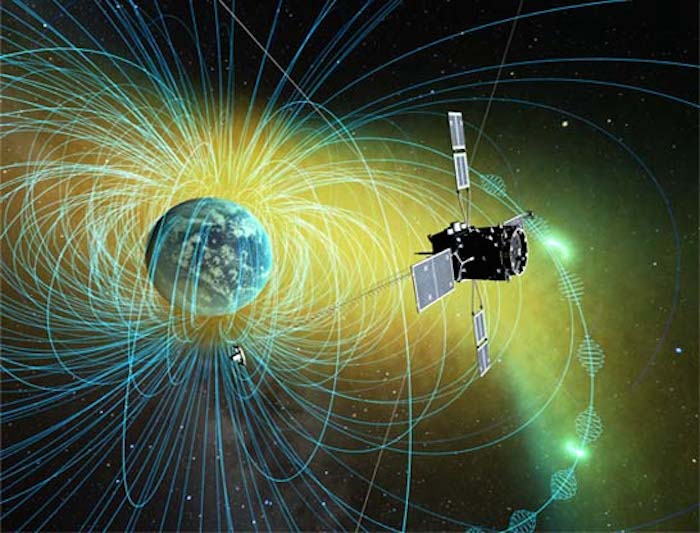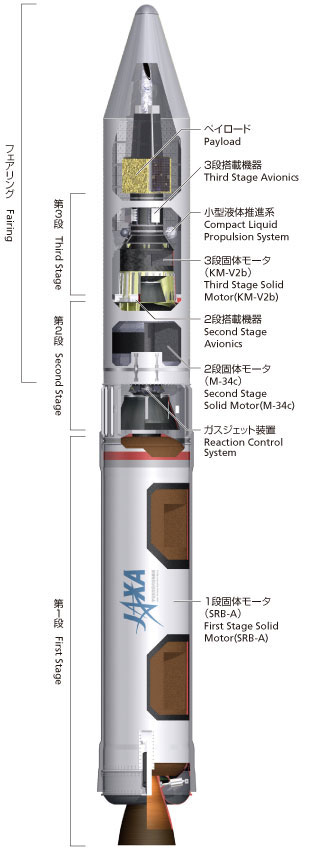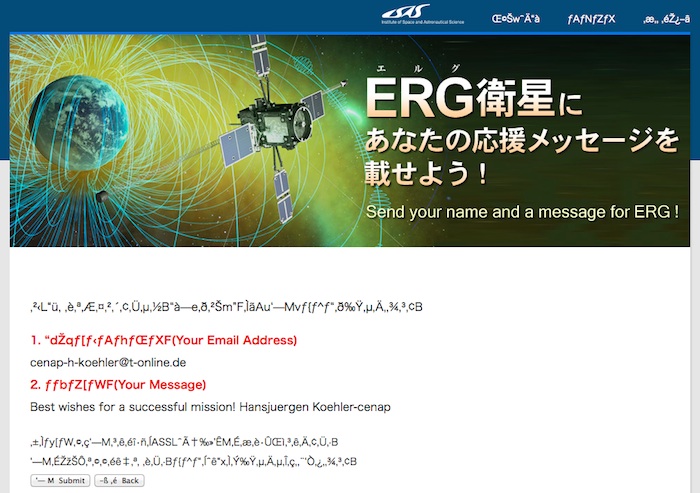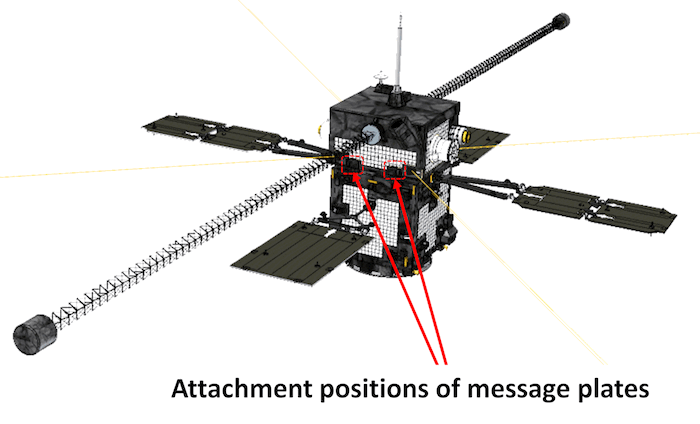.

To elucidate high-energy electrons that repeat their generation and disappearance.
Geospace is the region of outer space near the Earth. The radiation belt called the "Van Allen radiation belt" lies within the geospace, and the belt captures a huge volume of highly charged energy particles that exceed mega electron volts.
This project aims at elucidating how highly charged electrons have been born while they generate and vanish repeatedly along with space storms caused by the disturbance of solar wind caused by space storms, and how space storms are developed.
Mission Profile
Name Exploration of energization and Radiation in Geospace ERG
Launch Date 2016FY (Scheduled)
Location Uchinoura Space Center (USC)
Launch Vehicle
open new windowEpsilon
Configuration Weight 350kg
Orbit Altitude Perigee: about 300 km, Apogee: about 30,000 km
Inclination 31°
Type of Orbit Elliptical orbit
Period about 538 min.
Satellite bus SPRINT bus
Major Scientific Instruments (Scheduled)
Extremely high-energy electron sensor (XEP-e)
High-energy particle sensor - electron (HEP-e)
etc.
.

---

Toward Van Allen belts with ERG!
In the early days of space exploration, 1958, the first US satellite Explorer 1 discovered existence of high energy charged particles in geospace by the onboard radiation detector. The observations by subsequent explorers identified that high energy charged particles are distributed in doughnut shape surrounding Earth. This radiative zone is called the Van Allen belts named after the discoverer, Dr. James Van Allen of University of Iowa, US. The Van Allen belts dynamically change their amount of high energy charged particles depending on the solar activity (especially, during geospace storms).
Attachment positions of message plates
However, a large number of high energy charged particles in the Van Allen belts cause failure in electronic devices mounted on spacecraft and disturb accurate measurement of the charged particles inside the belts, therefore, it was very hard to observe the heart of the Van Allen belts. Consequently, the question, “Why, When, Where, and How the high energy particles are generated and lost,” has been an over a half century standing scientific mystery since the discovery of the Van Allen belts.
The ERG satellite (ERG: Exploration of energization and Radiation in Geospace) will challenge to reveal this mystery of the Van Allen belts with the most advanced nine science instruments. Since the Van Allen belts are distributed in wide altitude range, the ERG satellite takes a highly elliptical orbit to make comprehensive observations of high energy charged particles and electromagnetic fields in the Van Allen belts. (The apogee and perigee altitudes are about 30,000 km and 300 km, respectively, and the orbital period is about 9 hours.)
We would like to take this opportunity to collect your support messages for ERG that is about to leave the Earth toward the exploration to the Van Allen belts. Your messages and names will be printed on the aluminum plates, and these plates are going to be attached on the satellite as a part of the balance weight to commemorate your support to ERG. Now, together with ERG, let's go out to the exploration of the Van Allen belts that are the last frontier in geospace!
February, 2016
Iku Shinohara
Project Manager, ERG Project Team
Institute of Space and Astronautical Science
.

Quelle: JAXA
4250 Views
